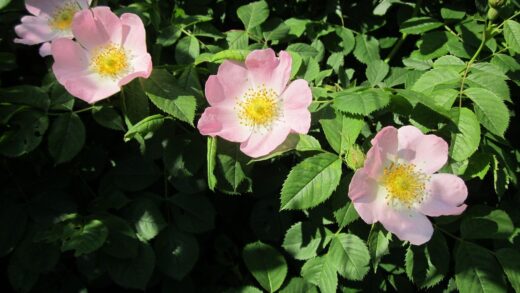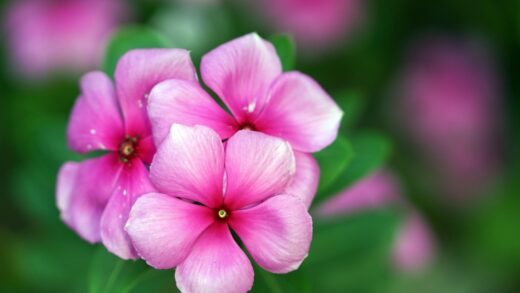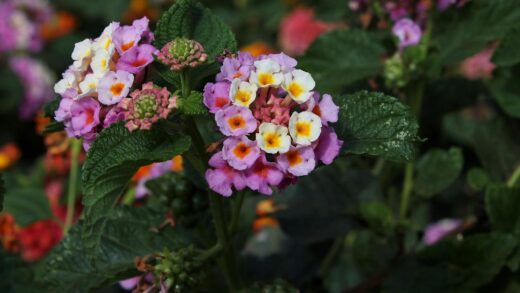Understanding the fundamental needs of Daphne laureola, commonly known as spurge laurel, is the first step toward cultivating a healthy and thriving specimen in your garden. This evergreen shrub, native to woodlands across Europe, North Africa, and Western Asia, presents a unique combination of subtle beauty and rugged resilience. Its glossy, dark green leaves provide year-round interest, while its small, fragrant, greenish-yellow flowers offer a delightful surprise in late winter or early spring. To successfully care for this plant, you must appreciate its preference for specific conditions that mimic its natural woodland habitat, paying close attention to soil, light, and moisture levels.
Caring for spurge laurel requires a long-term perspective, as this is a slow-growing shrub that does not respond well to frequent changes or disturbances. Once established in a suitable location, it is best left to its own devices with minimal intervention. The plant forms a well-branched, rounded shape naturally, contributing a sense of structure and permanence to shaded garden corners. Its evergreen nature makes it a valuable asset during the winter months, when other plants have died back, providing essential cover for wildlife and a splash of green in an otherwise muted landscape. This low-maintenance characteristic is a significant part of its appeal to many gardeners.
A critical aspect of caring for Daphne laureola involves acknowledging its toxicity. All parts of the plant, including the leaves, stems, flowers, and especially the black, berry-like drupes that follow the flowers, are poisonous if ingested. The sap can also cause significant skin irritation, a condition known as contact dermatitis, in sensitive individuals. Therefore, it is imperative to wear gloves and protective clothing when handling, pruning, or working around the plant. Siting the shrub away from areas frequented by children and pets is a crucial safety measure that should not be overlooked.
Ultimately, successful cultivation comes down to respecting the plant’s inherent nature. Spurge laurel is not a plant that thrives on constant feeding, aggressive pruning, or frequent relocation. It prefers a stable, undisturbed environment where it can slowly extend its roots and establish itself as a permanent garden feature. By providing the right initial conditions and then adopting a hands-off approach, you will be rewarded with a durable and elegant shrub that brings a touch of wild, woodland charm to your garden for many years. This patient and observant approach is the true key to its successful care.
Appreciating its native habitat
To provide the best care for spurge laurel, it is essential to understand the conditions of its native environment. This plant typically grows in the understory of deciduous or mixed woodlands, often on limestone-rich soils. In these settings, it is naturally protected from the harsh midday sun by the canopy of taller trees, receiving dappled or filtered sunlight for most of the day. The forest floor provides a consistently cool, moist, and well-draining substrate, rich in organic matter from decaying leaves and other plant debris. Replicating these conditions is the primary goal for any gardener wishing to cultivate this species.
More articles on this topic
The soil in its natural habitat is a key factor in its health. It is typically alkaline to neutral, a crucial detail to consider when preparing a planting site. The soil structure is also important; it is loamy and friable, allowing roots to penetrate easily without becoming waterlogged. The constant supply of leaf litter acts as a natural mulch, which helps to retain soil moisture, suppress weed growth, and maintain a cool root run, all of which are vital for the sensitive root system of the daphne. Understanding this interplay between soil chemistry, structure, and organic content is fundamental to its long-term success.
The climate in its native range is generally temperate, with distinct seasons that include cool, wet winters and moderately warm summers. The plant is well-adapted to survive periods of cold and is quite hardy, but it benefits from the insulating effect of snow cover or a thick layer of fallen leaves during the coldest months. It does not perform well in overly hot and dry climates, where the intense sun and lack of moisture can cause stress, leaf scorch, and a general decline in vigour. Therefore, providing a sheltered location that avoids temperature extremes is highly beneficial.
This understanding of its natural environment should guide every aspect of its care, from initial site selection to ongoing maintenance. By choosing a spot with partial shade, providing well-drained, alkaline soil enriched with organic matter, and ensuring consistent moisture without waterlogging, you are creating a micro-environment that mirrors the woodland floor. This approach will minimize plant stress and allow the spurge laurel to establish itself successfully, grow at its own natural pace, and display its characteristic health and beauty with minimal intervention required from the gardener.
Soil preparation and requirements
Proper soil preparation is arguably the most critical factor in the long-term health and survival of Daphne laureola. This shrub has a strong preference for well-drained, humus-rich soil with a neutral to alkaline pH. Before planting, it is highly advisable to test the soil’s pH to determine if any amendments are necessary. If the soil is acidic, the pH can be raised by incorporating garden lime or dolomitic limestone, following the product’s instructions carefully to avoid over-liming. This step should be taken several weeks before planting to allow the lime to react with the soil.
More articles on this topic
The structure of the soil is equally important as its chemistry. Spurge laurel has a sensitive root system that is highly susceptible to rot if it sits in waterlogged conditions. Heavy clay soils, which retain excessive moisture and are slow to drain, must be amended to improve their porosity. Incorporating generous amounts of organic matter, such as well-rotted leaf mould, compost, or composted bark, will help to break up the heavy clay particles and create a more open, friable structure. In sandy soils, the same organic amendments will improve water and nutrient retention, creating a more hospitable environment.
When preparing the planting hole, it should be dug at least twice the width of the root ball but no deeper. The goal is to encourage the roots to spread outwards into the surrounding prepared soil rather than downwards into potentially compacted and poorly drained subsoil. Loosening the soil on the sides of the hole will further facilitate this outward root growth. A layer of coarse grit or small gravel can be added to the bottom of the planting hole to further enhance drainage, especially in areas known for heavy rainfall or dense soil.
After planting, applying a layer of organic mulch around the base of the shrub is highly beneficial. A two to three-inch layer of leaf mould, shredded bark, or compost will help to replicate the natural conditions of the forest floor. This mulch will conserve soil moisture, regulate soil temperature to keep the roots cool, and suppress the growth of competing weeds. As the mulch decomposes over time, it will continue to enrich the soil with essential nutrients, promoting a healthy soil ecosystem that supports the plant’s growth.
Watering and moisture needs
Maintaining the correct moisture balance is crucial for Daphne laureola, as it is intolerant of both drought and waterlogging. The goal is to keep the soil consistently moist, but never saturated. During the first growing season after planting, the shrub requires regular and careful watering to help it establish a strong and extensive root system. Check the soil moisture every few days, especially during dry spells, by inserting a finger a few inches into the soil. Water deeply whenever the top two inches of soil feel dry to the touch.
Once the plant is well-established, typically after the first year, its watering needs will decrease significantly, and it will exhibit a good degree of drought tolerance, particularly when planted in a shady, mulched location. However, it will still benefit from occasional deep watering during prolonged periods of heat and drought. It is far better to provide a thorough soaking once every week or two during dry weather than to give light, frequent sprinklings, which only wet the surface and encourage shallow root growth. Always water at the base of the plant to deliver moisture directly to the root zone and avoid wetting the foliage, which can encourage fungal diseases.
The signs of improper watering are usually quite clear. An overwatered plant may exhibit yellowing leaves (chlorosis), wilting, and stem or root rot at the base. The soil around an overwatered plant will feel soggy or muddy to the touch. Conversely, an underwatered spurge laurel will show signs of wilting, and its leaves may become dry, brittle, and may drop prematurely. The edges of the leaves might also turn brown and crispy. Observing the plant and the soil condition regularly will help you adjust your watering practices as needed.
It is also important to consider the season when determining watering frequency. The plant’s water requirements are highest during the spring and summer months when it is actively growing. As temperatures cool in the autumn, its water needs will naturally decline, and you should reduce the frequency of watering accordingly. During the winter, especially for plants in the ground, natural precipitation is often sufficient, and supplemental watering is rarely needed unless there is a very unusual and prolonged dry, cold spell. For container-grown plants, however, occasional winter watering may be necessary to prevent the soil from drying out completely.
Light and siting considerations
The correct placement of Daphne laureola is fundamental to its success, and this is primarily dictated by its light requirements. As a natural woodland understory plant, it has evolved to thrive in dappled or partial shade. The ideal location in a garden setting is one that receives gentle morning sun and is then protected from the intense, direct sun of the afternoon. A position beneath the high canopy of deciduous trees or on the north or east-facing side of a building or wall often provides these perfect conditions.
Exposure to too much direct sunlight is highly detrimental to the health of spurge laurel. In a location with excessive sun, the leaves are prone to scorching, which appears as brown, dry patches and crispy edges. The overall colour of the foliage may become faded or yellowish-green instead of its characteristic deep, glossy green. Furthermore, constant direct sun will heat the soil and stress the root system, which prefers cool, moist conditions, leading to a general lack of vigour and an increased susceptibility to pests and diseases.
Conversely, while it is highly shade-tolerant, deep, perpetual shade is also not ideal. In a location that receives very little or no direct light, the plant may become leggy and sparse as it stretches towards the nearest light source. While it will likely survive in deep shade, its growth will be slower, and it may not flower as prolifically as a plant sited in partial shade. The ideal is a balance, where the plant receives enough indirect light to photosynthesize efficiently and produce flowers, but is shielded from the damaging effects of harsh, direct rays.
When choosing a final planting spot, consider the long-term picture. Remember that this is a slow-growing, permanent shrub that resents being moved once established due to its sensitive root system. Observe the light patterns in your garden throughout the day and across different seasons to find the perfect microclimate. By carefully selecting a site that offers protection from the afternoon sun and provides the cool, shaded environment it loves, you are laying the foundation for a healthy and beautiful shrub that will grace your garden for many years.
Long-term health and maintenance
Ensuring the long-term health of an established spurge laurel is primarily a matter of observation and minimal intervention. Once you have provided the correct initial conditions, the plant is remarkably self-sufficient. Regular check-ups are more important than regular tasks. Periodically inspect the foliage for any signs of pests or diseases, such as discoloured spots, holes, or the presence of insects. Early detection of any potential issues is key to preventing them from becoming major problems that could compromise the plant’s health.
Pruning should be kept to an absolute minimum, as daphnes in general, including Daphne laureola, do not respond well to heavy cutting. The only pruning that is typically necessary is the removal of any dead, damaged, or diseased branches. This can be done at any time of year, but late winter or early spring, just before new growth begins, is often the best time. Use clean, sharp secateurs to make precise cuts back to a healthy bud or a main stem. Avoid any drastic reshaping, as this can shock the plant and lead to dieback.
Maintaining the organic mulch layer around the base of the plant is a simple but highly effective long-term care strategy. Each autumn or spring, replenish the mulch with a fresh layer of leaf mould, composted bark, or well-rotted compost. This practice helps to continually enrich the soil, maintain the cool, moist root environment that the plant loves, and suppress weed competition. It effectively mimics the natural cycle of falling leaves and decomposition that occurs in its native woodland habitat, providing a slow and steady supply of nutrients.
Finally, resist the temptation to frequently fertilise an established spurge laurel. In a well-prepared, humus-rich soil, the plant will find most of the nutrients it needs, especially with the regular replenishment of organic mulch. If the plant shows signs of poor growth or pale leaves despite being in good soil, a very light application of a balanced, slow-release fertiliser in the spring can be beneficial. However, over-fertilising can lead to weak, sappy growth that is more susceptible to pests and diseases, so it is always better to err on the side of caution.
📷: Josep Gesti, CC BY-SA 4.0, via Wikimedia Commons


















